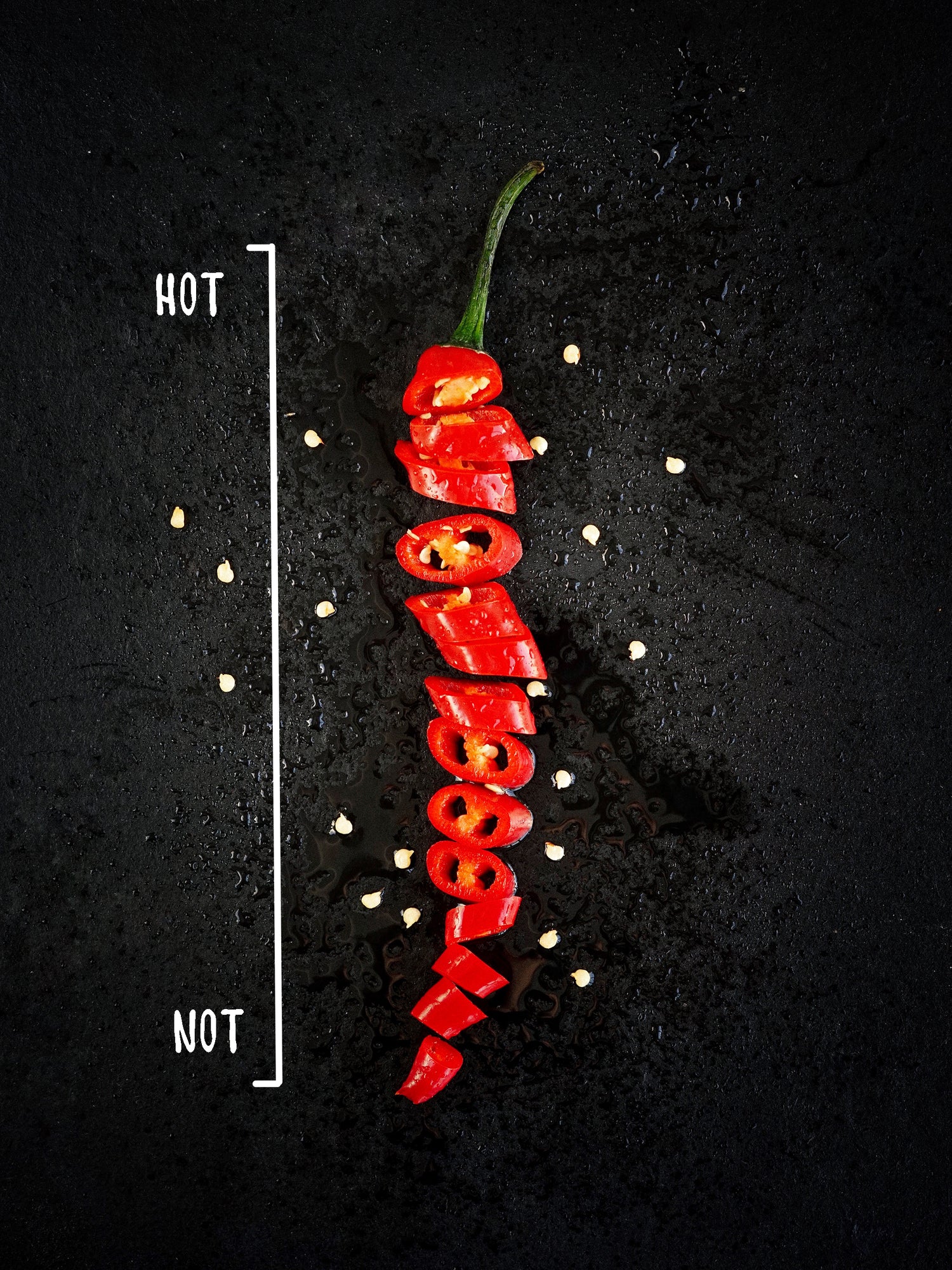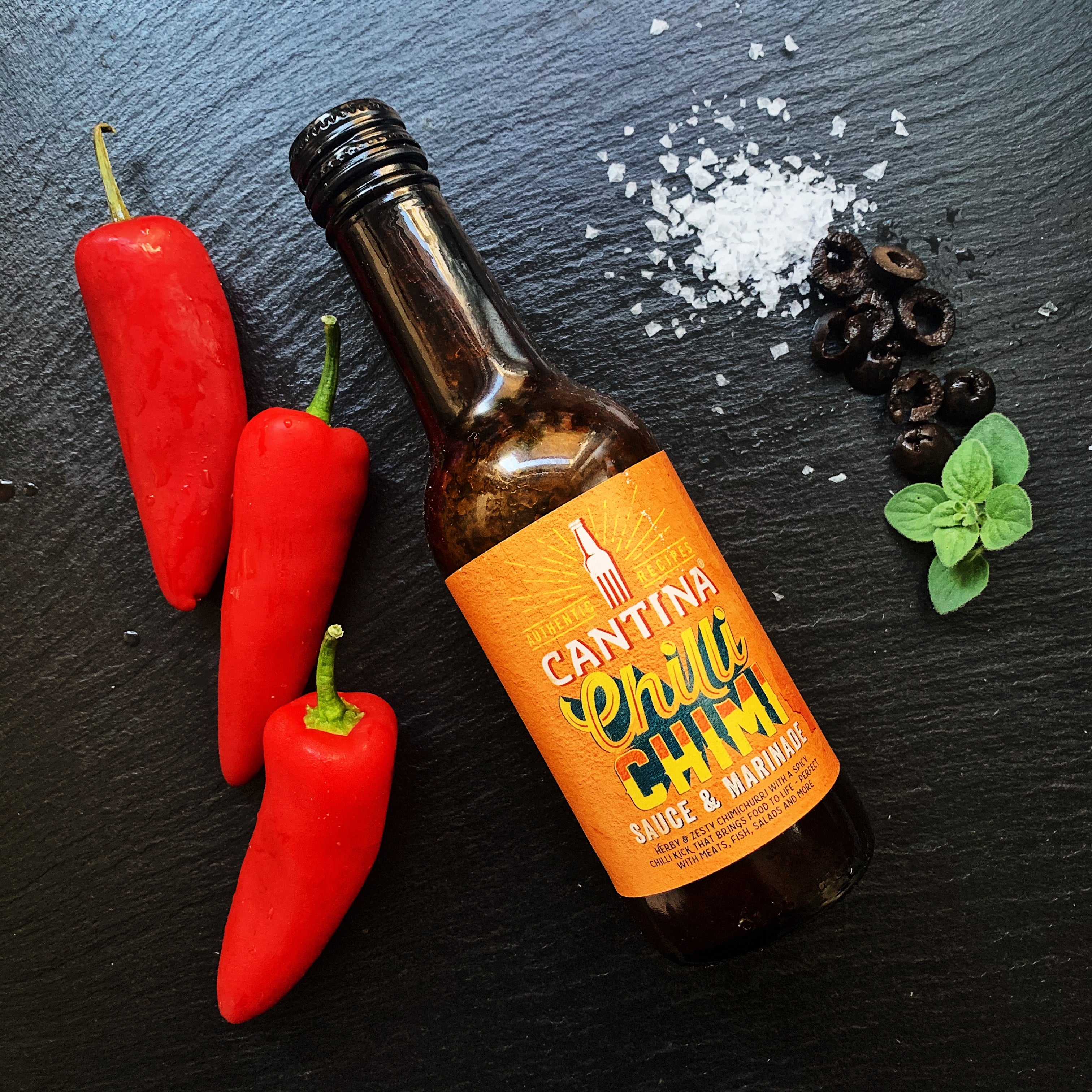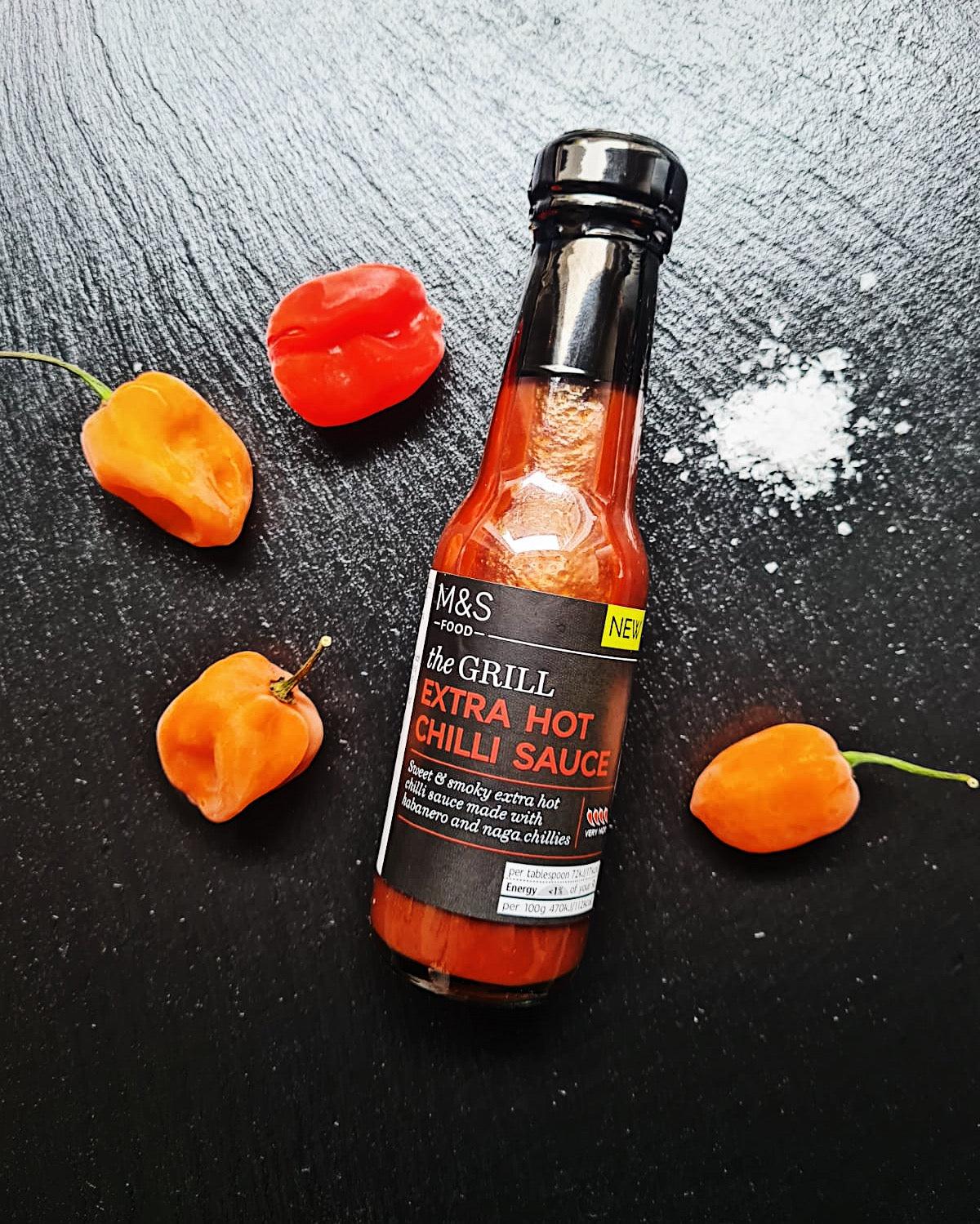Everyone experiences heat differently. From people that find Cumberland sausages spicy to seasoned competitive eaters who munch down raw chillies like they’re little apples, the scale is immense, and no two people will ever have exactly the same tolerance.
This makes answering the question “How hot are your sauces” tricky but let’s explore some ways you can rate hot sauces and make better choices!
The Scoville scale is more a guide than an exact science.
When trying to gauge heat lots of people rely on the trusty Scoville scale to give them an answer. However even this isn’t massively reliable for two good reasons.
1. When being measured the scale is subjective. The Scoville scale is a measure of heat based on how many times something has to be diluted before you can not detect the heat anymore. This ‘detection’ is still reliant on an actual human tasting the diluted solution to see if they can taste any heat. So even within Scoville rated sauces the actual heat can vary wildly.
2. Even with a Scoville rating your experience of that heat will be completely different depending on the person eating it and the chillies used. Drinking hot sauce is like drinking alcohol. You more you do it the better you get at it. So even with a Scoville scale one persons 200,000 SHU is very different to another’s.
There’s lots of KINDS of heat.
When categorising our sauces by heat we like to take three areas into account. You’ll find a description of these element under every one of our sauces, so be sure to read up.
Onset: How fast the heat actually comes on. Different peppers have different onset speeds, for example Habanero and Scotch bonnet peppers tend to come on very quickly, whereas Carolina Reapers have a slow acting heat that builds.
Peak: This is what most people think of when they think of heat, how hot it gets at it’s peak, regardless of the time it takes to get there. In this regard you can keep it simple. Super hots are… well super hot. Scorpion, Nagas, Reapers, Pepper X you name it these ones are going to hurt. Whereas a Dutch Red Chilli is more like a bell pepper. Awwww.
Linger: This is the kicker. Possibly even more important when taking into account how much a sauce is going to hurt is how long it’s going to last. This is why when making Condimaniac sauces we like to mix up the peppers we use in one sauce. Take Séance for example. We use Habaneros which are generally fast to come on, peak quite high but then go away just as quickly. We then mix these with a hit Jolokia or Ghost Peppers. Those bad boys are slow to start but when they get there they really burn and don’t go away in a hurry. This way we get a layered heat experience. Super hots like Reapers linger for a particularly long time, whilst your body tries to break down the caps
Make comparisons, not competition.
Well our preferred method is by way of comparison. Hot sauce lovers will generally try more than one sauce. So it’s quite likely that there’s a brand out there that will have developed a similar kind of heat to the sauce that you want to try. This way you can compare the new hot sauce to something on your own subjective scale.
To illustrate this here’s a few of our sauces and brands that compare in heat (in our opinions...)
Smokey Dragon ➡️ Tubby Tom's Squealer, Yellowbird Habanero Condiment
Flying Fox ➡️ Tubby Tom’s Scorpion Slammer
Kyubi ➡️ Secret Aardvark Habanero Hot Sauce
Heat isn’t just about pain. It’s an art form and good sauces should create an experience. So next time you’re thinking about what sauce to pick, consider the kind of experiences your favourite sauces create and maybe think twice before defaulting to the top of the Scoville scale.
Enjoy!




Leave a comment
All comments are moderated before being published.
This site is protected by reCAPTCHA and the Google Privacy Policy and Terms of Service apply.